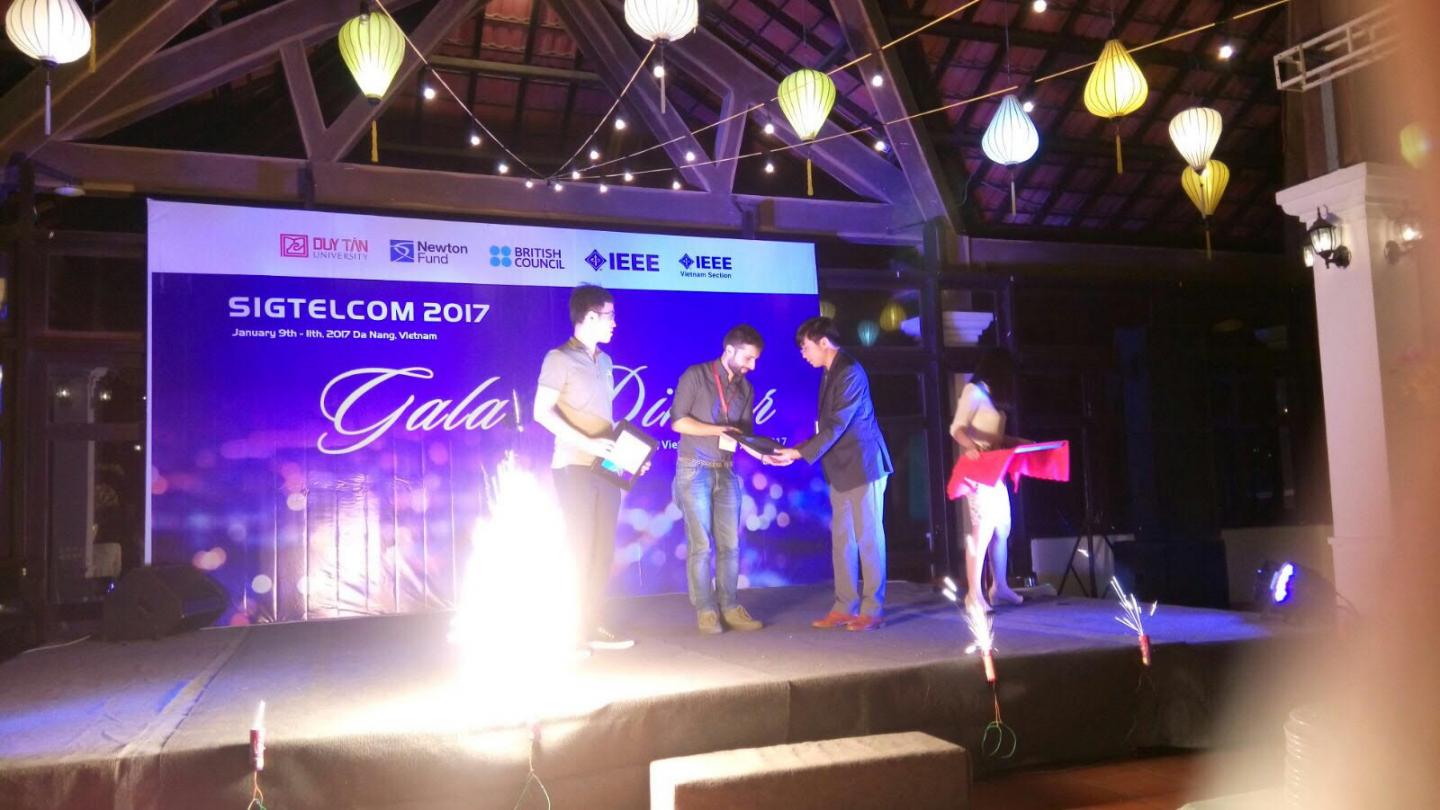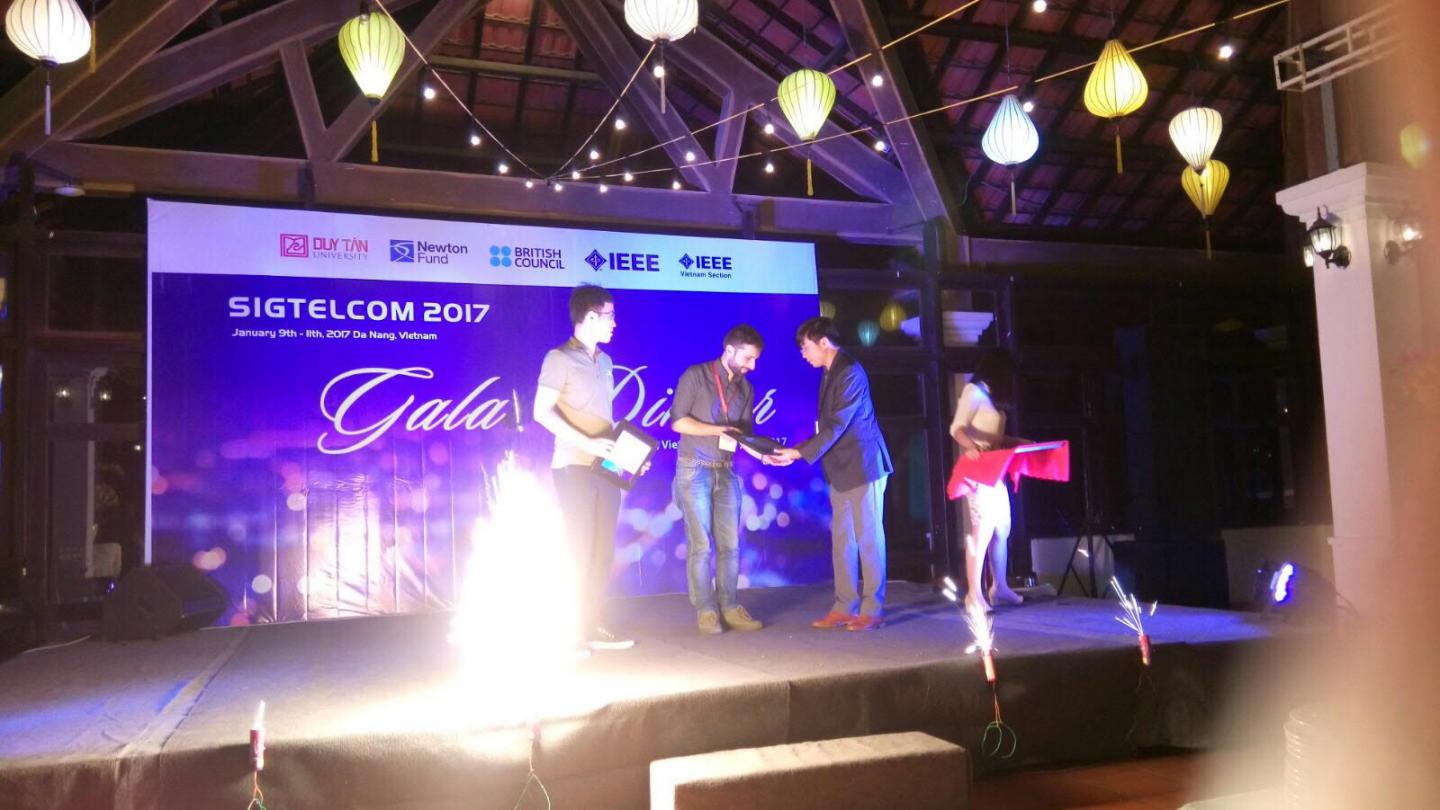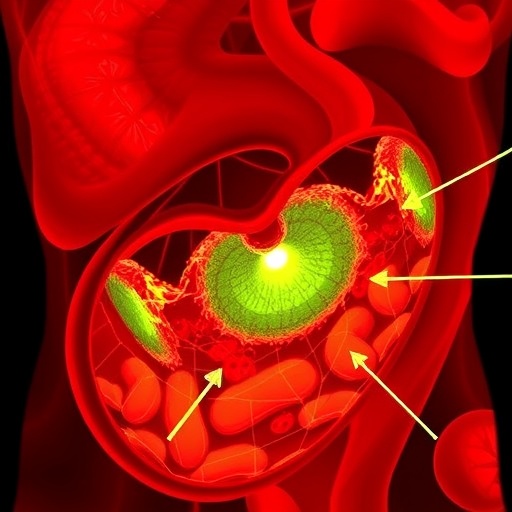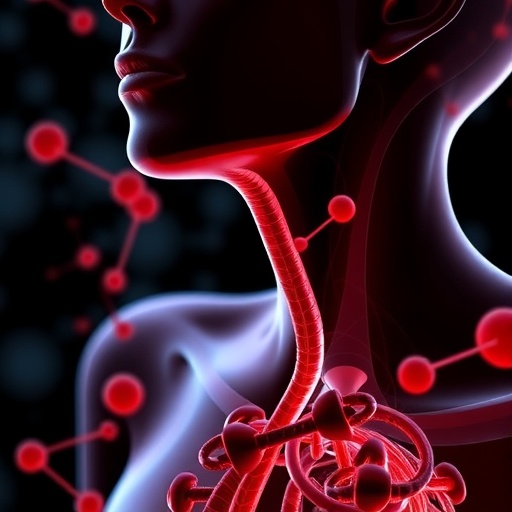
Credit: University of Bristol
New research that suggests a pre-existing 4G network infrastructure could help drivers make safe decisions in or near accidents has won the 'Best Paper Award' at an international conference.
The research carried out by the University of Bristol Communication Systems & Networks (CSN) Group, in collaboration with the Université Blaise Pascal in France, was presented at the international conference Signal Processing, Telecommunications & Computing (SigTelCom) 2017, supported by IEEE, Newton Fund and British Council.
An important factor in vehicle-related accidents is the lack of information and if drivers are aware of their surroundings and road conditions, many accidents could be avoided. As driverless cars begin to gain momentum, improvements will be needed to ensure vehicles receive the correct information. A key question is how high-quality data can be shared by an Intelligent Transportation System (ITS) to help drivers in emergency situations.
The research team suggest a cost-effective solution to this problem is for city-owned base stations to form a single frequency network (SFN), which will enable drivers to have the information they need to make safe decisions in or near accidents.
In order to ensure that transmissions are reliable, tight bounds on the outage probability would need to be developed when the SFN is overlaid on an existing cellular network.
The researchers also present an extremely efficient transmission power allocation algorithm that, for the situations outlined, can reduce the total immediate SFN transmission power by up to 20 times compared to a static uniform power allocation solution. This is particularly important when base stations rely on an off-grid power source, such as batteries.
Dr Andrea Tassi, Senior Research Associate in Wireless Connectivity for Autonomous Vehicles from the Department of Electrical and Electronic Engineering and CSN Group, who led the research, said: "Obtaining high-quality sensor information is critical in vehicle emergencies. We have shown that our proposed power allocation (PA) model can help to significantly reduce the transmission power of the proposed network while target signal-to-noise and interference ratio (SINR) outage constraints are met. With cars receiving reliable information, our research could improve road safety in future intelligent transportation systems."
The University's CSN Group is part of the Innovate UK-funded projects, VENTURER and FLOURISH, and is playing a leading role in connectivity for automotive applications.
###
Paper:
'Wireless Vehicular Networks in Emergencies: A Single Frequency Network Approach' by Andrea Tassi, Malcolm Egan, Robert J. Piechocki and Andrew Nix, presented at SigTelCom 2017.
Media Contact
Joanne Fryer
[email protected]
44-011-733-17276
@BristolUni
http://www.bristol.ac.uk
############
Story Source: Materials provided by Scienmag





